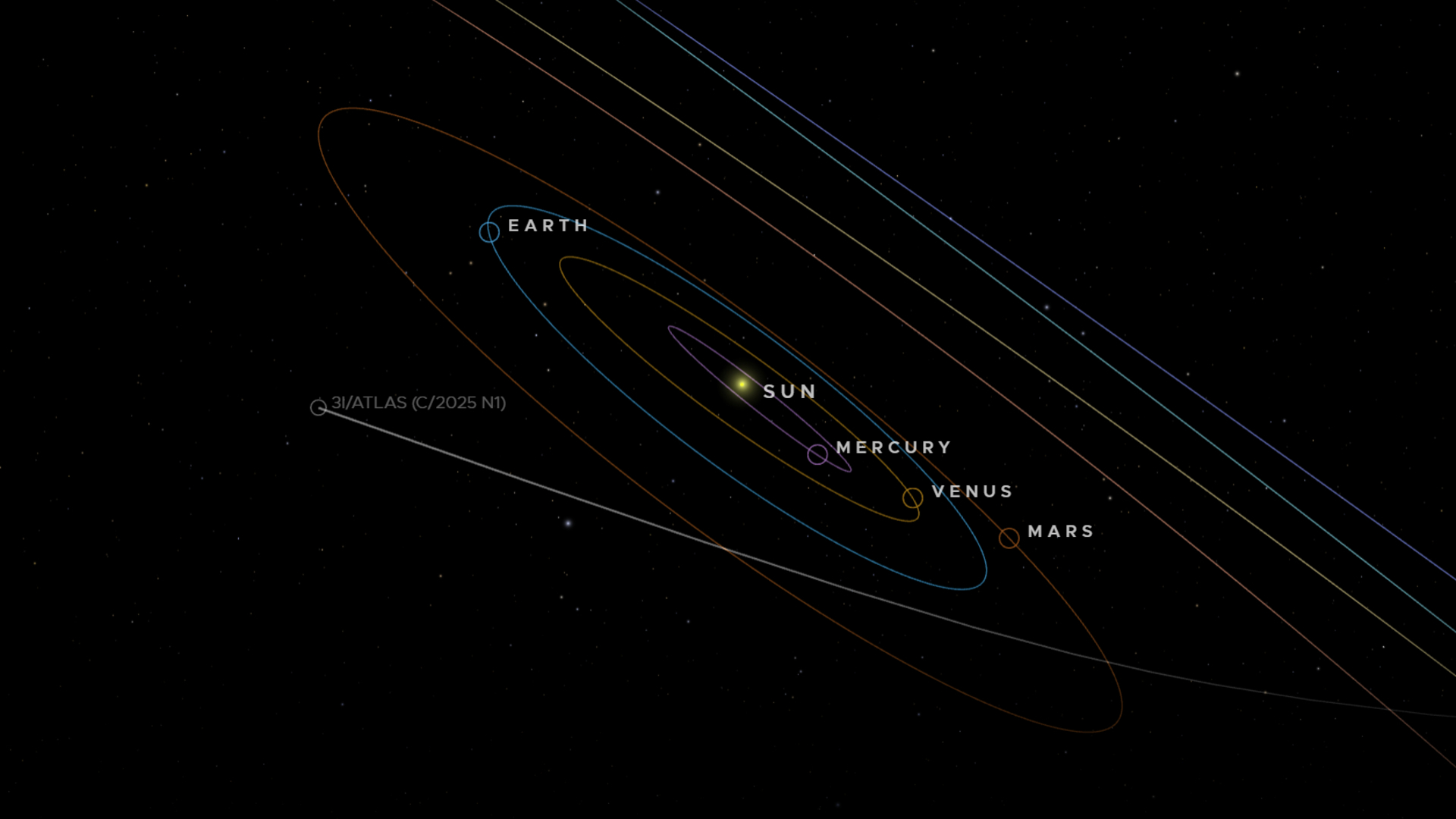Sun's Rumored Hidden Companion May Not Exist After All
Some astronomers believe a hidden mini star nicknamed Nemesis is orbiting the sun, but a new analysis of life extinction cycles on Earth suggests this dark companion may not exist.
Nemesis was first proposed in 1984 to explain perplexing cycles in mass extinctions on Earth. About every 27 million years, almost like clockwork, there is a significantly higher likelihood that a mass extinction will take place on our planet ? akin to the apocalypse that killed off the dinosaurs (and much of the rest of Earth's life) about 65.5 million years ago.
The scale of this cycle ? on the order of tens of millions of years ? suggests some celestial phenomenon might be affecting it.
"If you see something with a very regular cycle that?s like 10 million or 100 million years, you tend to think of things astronomical," said physicist Adrian Melott of the University of Kansas in Lawrence, Kan. "For example, the galaxy takes about 250 million years to orbit once."
Unseen companion
Astronomers suggested that a low-mass star ? such as a dim red dwarf or white dwarf ? called Nemesis might be orbiting our sun at a large distance, nearly a light-year away, out beyond the orbits of the planets. Such a body could have an orbit that might take about 27 million years to make a complete circuit.
At that rate, once during each orbit it may enter a collection of comets surrounding the solar system called the Oort cloud. When Nemesis passes through the Oort cloud, it could disturb the orbits of many comets, causing some to fall into the solar system and eventually impact Earth.
Breaking space news, the latest updates on rocket launches, skywatching events and more!
"There'd be a whole bunch of comets every so often and the Earth would get smacked and it would cause an extinction," Melott explained.
In a new study, Melott and colleague Richard Bambach of the National Museum of Natural History in Washington, D.C., analyzed a trove of data about past extinctions on Earth. They looked at the fossil record going back 500 million years.
The new analysis confirmed that the 27-million-year cycle exists, with an excess of extinctions happening around those peaks. There are, of course, extinctions that occur in the middle of a cycle, and sometimes when a peak comes around the Earth has been safe. But on the whole, the scientists confirmed that life gets a bit more risky here on Earth every 27 million years.
(By the way, we have 16 million years until the next peak, so no need to get too worried.)
No Nemesis?
However, far from helping to confirm the Nemesis hypothesis, Melott and Bambach argue their findings suggest Nemesis couldn't possibly exist.
"If Nemesis existed and had this kind of an orbit, its orbit would not be regular," Melott told SPACE.com. "Calculations indicate its orbit would change by 20 to 50 percent due to the gravitational attraction of stars as they pass by us, and the movement of the sun in the galaxy."
Thus, a celestial body like Nemesis couldn't explain such a long-standing, steady cycle, because its orbit itself would not be steady over such a long period of time.
Melott said his data basically puts the final nail in the coffin of the Nemesis idea. But others aren't so sure. Some in the field question whether the fossil record is really accurate enough to establish a cycle going back that far.
"To that I would say, yes we can, now that the accuracy has improved so much," Melott said. "And even if there were errors in the timing, that wouldn?t cause something to appear so clockwork and regular, it would smear the signal out."
Melott and Bambach said it leaves the question of what's causing the extinction cycle totally open.
"For me, it's a complete head-scratcher," Melott said.
The researchers' paper describing the finding has been accepted for publication in an upcoming issue of the journal Royal Astronomical Society Letters.
- Image Gallery: The New Solar System
- Amazing Milky Way Images
- Violent Planet: The Forces that Shape Earth

Clara Moskowitz is a science and space writer who joined the Space.com team in 2008 and served as Assistant Managing Editor from 2011 to 2013. Clara has a bachelor's degree in astronomy and physics from Wesleyan University, and a graduate certificate in science writing from the University of California, Santa Cruz. She covers everything from astronomy to human spaceflight and once aced a NASTAR suborbital spaceflight training program for space missions. Clara is currently Associate Editor of Scientific American. To see her latest project is, follow Clara on Twitter.
